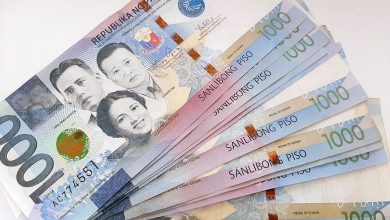Manufacturing activity further slows in March

PHILIPPINE factory activity expanded at a slower pace in March, as production contracted for the first time since July 2022, a survey by S&P Global showed.
The S&P Global Philippines Manufacturing Purchasing Managers’ Index (PMI) stood at 50.9 in March, a “modest improvement” from 51 in February.
This matched the PMI in January and was the weakest reading since 50.6 in September last year.
A PMI reading above 50 denotes better operating conditions than in the preceding month, while a reading below 50 shows the opposite.
The Philippines’ latest PMI reading marked the seventh straight month of improving operating conditions.
“The health of the Filipino manufacturing sector revealed some underlying concerns as the first quarter came to a close,” Maryam Baluch, economist at S&P Global Market Intelligence, said in the report. “Contributing to the somewhat mixed picture was a fresh fall in production levels, with companies attributing this to material shortages.”
In March, the Philippines’ PMI reading was the second-fastest among six Association of Southeast Asian Nations (ASEAN) member-countries, behind only Indonesia (54.2).
Vietnam (49.9), Thailand (49.1), Malaysia (48.4) and Myanmar (48.3) posted contractions in March.
The average ASEAN headline PMI improved to 51.5 in March from 50.4 in February, which S&P Global said signaled a “solid improvement in operating conditions.”
In the Philippines, S&P Global noted that production in March contracted for the first time since July 2022 due to shortages in raw materials.
“The downturn came despite firms in general recording sustained demand for goods. However, if firms are able to successfully secure materials and build their stocks, the downturn in output could be fleeting,” Ms. Baluch said.
Philippine manufacturers reported growth in new orders in March but these were “historically subdued.”
“The rate of growth moderated on the month and was the second weakest in the current seven-month sequence of expansion,” S&P Global said.
Meanwhile, companies started to hire more workers in March, with job growth the strongest in a year and a half.
Ms. Baluch noted manufacturing companies had also ramped up buying activity in March, marking the fourth consecutive monthly rise.
While costs of raw materials increased due to El Niño and shortages, S&P Global said some suppliers tempered price hikes to boost sales.
“As a result, cost burdens rose at the weakest pace since October 2020. Furthermore, Filipino goods producers reduced their selling prices for the first time in nearly four years, albeit only fractionally,” it said.
Manufacturers in the Philippines kept an optimistic outlook on output, although confidence declined for a third straight month.
“Sentiment among manufacturers weakened and was the least optimistic in nearly four years. Firms were concerned that increased market competition would limit growth prospects. However, hopes of demand conditions domestically and globally strengthening continued to buoy confidence levels,” Ms. Baluch said.
The headline PMI measures manufacturing conditions through the weighted average of five indices: new orders (30%), output (25%), employment (20%), suppliers’ delivery times (15%) and stocks of purchases (10%).
Union Bank of the Philippines, Inc. Chief Economist Ruben Carlo O. Asuncion said the shortage in raw materials experienced by manufacturers might have been due to the Red Sea shipping crisis.
In a Viber message, he said the shortage is only temporary, but manufacturers might have to adjust operations.
“Overall, manufacturers may have to deal with margin compression but may also be wary of potential market loss if they increase their prices,” Mr. Asuncion said. “With El Niño weakening… manufacturing may soon pick up once more as we move into the second half of 2024 when interest rate cuts are largely expected by the market.”
Rizal Commercial Banking Corp. Chief Economist Michael L. Ricafort said the slight easing in manufacturing activity might have been due to the Holy Week break.
“The local manufacturing gauge is still in expansion mode for nearly all months since September 2021 (except for the contraction mode in August 2023 at 49.7), therefore still one of the bright spots for the Philippine economy,” he said in an e-mail.
FACTORY ACTIVITY IN ASIAMeanwhile, factory activity in many Asian economies weakened in March despite a rebound in China as lackluster domestic demand dragged growth, surveys showed on Monday, clouding the outlook for a once fast-expanding and key driver of the global economy.
Export powerhouses Japan and South Korea saw manufacturing activities shrink, as well as Taiwan, Malaysia and Vietnam in a sign of the fragile state of the region’s economies.
China’s Caixin/S&P Global Manufacturing Purchasing Managers’ Index (PMI) rose to 51.1 in March from 50.9 the previous month, a private survey showed, expanding at the fastest pace in 13 months with business confidence hitting an 11-month high.
The findings join an official PMI survey released on Sunday that showed China’s factory activity expanded for the first time in six months.
The rebound in China, which is struggling to mount a strong economic revival partly due to a protracted property crisis, provides some welcome relief to Beijing and investors globally.
Yet, the weakness in other parts of Asia highlights the challenge the region’s policy makers face as they wrestle with patchy signs of recovery in global demand and uncertainty on when the US Federal Reserve would start to cut interest rates.
“China’s exports are picking up a bit but that’s because their goods are cheap. That means other Asian countries must compete with China for demand that’s not growing,” said Toru Nishihama, chief emerging market economist at Dai-ichi Life Research Institute.
“With no clear driver of global growth, it’s hard to paint a rosy outlook for Asia,” he added.
Japan’s final au Jibun Bank PMI stood at 48.2 in March, the highest since November and recovering from February’s 47.2 which marked the fastest contraction in over three-and-a-half years.
But activity contracted for a 10th straight month as new export orders slumped, reflecting souring sentiment in key markets like China and North America, the survey showed.
South Korea’s manufacturing activity also weakened in March as slowing domestic demand offset robust overseas sales, with the PMI falling to 49.8 in March from 50.7 in February. — Beatriz Marie D. Cruz with Reuters




